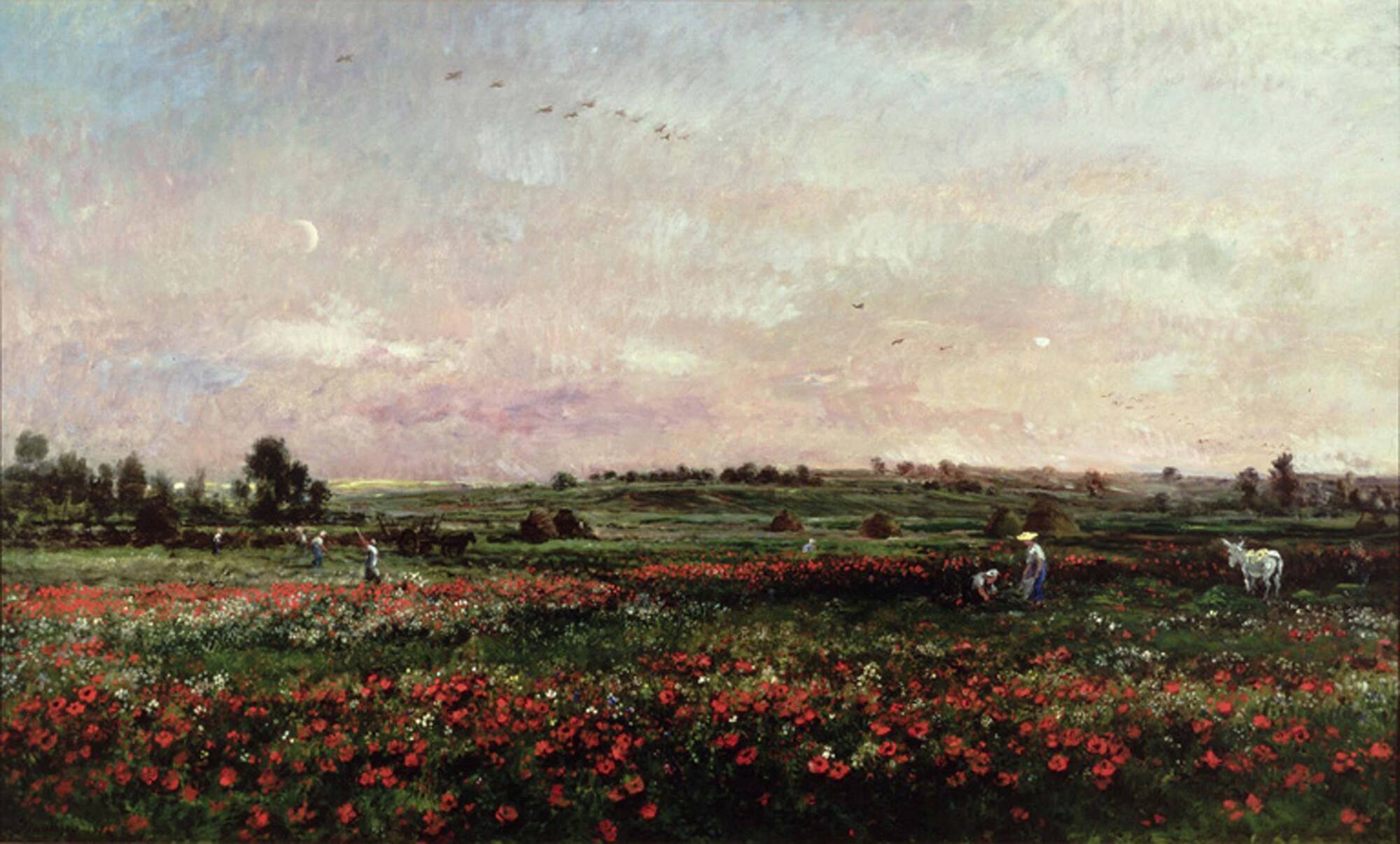Charles François Daubigny
(French, 1817–1878)
Les champs au mois de juin (Fields in the Month of June)

Object Details
Artist
Charles François Daubigny
Date
1874
Medium
Oil on canvas
Dimensions
Image: 54 × 86 inches (137.2 × 218.4 cm)
Frame: 61 3/4 × 96 3/4 inches (156.8 × 245.7 cm)
Credit Line
Gift of Louis V. Keeler, Class of 1911, and Eva P. Keeler
Object
Number
59.087
When “Fields in the Month of June” was shown in the Salon of 1874, Daubigny’s rapid juxtaposition of(…)
When “Fields in the Month of June” was shown in the Salon of 1874, Daubigny’s rapid juxtaposition of brushstrokes, absence of detail, spots of brilliant color, and immediacy represented a dramatic move away from the classical polish of official Salon painting. Courbet’s skilled use of the palette knife and Jules Breton’s treatment of rural subject matter contributed to Daubigny’s style as much as the decision to work in natural sunlight for a more direct translation of his settings. His innovative treatment of landscape would, in retrospect, be viewed by historians as a transitional moment between the style of the Salon (on whose jury he served) and the radical experiments of Pissarro, Cézanne, Renoir, and Monet; Monet’s painting of poppy fields was shown only a year earlier and its rejection by the same Salon on whose jury Daubigny served had provoked the latter’s resignation. In 1872, Daubigny traveled to the Netherlands, where he began his most important painting to date, “The Mills of Dordrecht.” From his studio-barge, le botin, anchored at Auvers-sur-Oise, Daubigny continued to rely on Corot’s organizing tonality (which had been his greatest influence as early as 1852), introducing in the Johnson Museum’s monumental canvas vibrant accents and soaring expanses of sky that dwarfed the peasants laboring in the horizontal sweep of open field. One of his largest canvases, “Fields in the Month of June” overwhelmed unaccustomed eyes by its sheer scale and perspective. Not long before his death, van Gogh painted several versions of Daubigny’s garden at Auvers; he had admired, fifteen years earlier, the Barbizon artist’s “beautiful things” hanging in Goupil’s London gallery. (From “A Handbook of the Collection: Herbert F. Johnson Museum of Art,” 1998)












